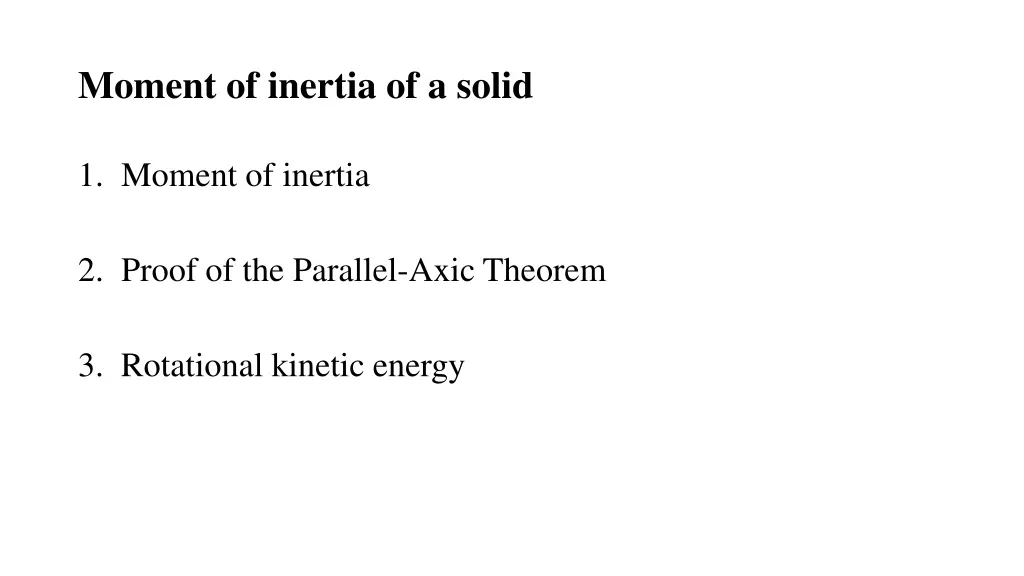
Understanding Moment of Inertia and Rotational Kinetic Energy
Explore the concept of moment of inertia, rotational kinetic energy, and the proof of the Parallel-Axis Theorem. Learn how these principles relate to rotational motion and energy in physics.
Download Presentation

Please find below an Image/Link to download the presentation.
The content on the website is provided AS IS for your information and personal use only. It may not be sold, licensed, or shared on other websites without obtaining consent from the author. If you encounter any issues during the download, it is possible that the publisher has removed the file from their server.
You are allowed to download the files provided on this website for personal or commercial use, subject to the condition that they are used lawfully. All files are the property of their respective owners.
The content on the website is provided AS IS for your information and personal use only. It may not be sold, licensed, or shared on other websites without obtaining consent from the author.
E N D
Presentation Transcript
Moment of inertia of a solid 1. Moment of inertia 2. Proof of the Parallel-Axic Theorem 3. Rotational kinetic energy
1. Moment of inertia If a rigid body is a continuous distribution of mass like a solid cylinder or a solid sphere it cannot be represented by a few point masses. In this case the sum of masses and distances that defines the moment of inertia Moment of inertia and rotational kinetic energy: The moment of inertia I of a body about a given axis is a measure of its rotational inertia: The greater the value of I, the more difficult it is to change the state of the body s rotation. The moment of inertia can be expressed as a sum over the particles that make up the body, each of which is at its own perpendicular distance from the axis. The rotational kinetic energy of a rigid body rotating about a fixed axis depends on the angular speed and the moment of inertia I for that rotation axis.
2. Proof of the Parallel-Axic Theorem Calculating the moment of inertia: The parallel-axis theorem relates the moments of inertia of a rigid body of mass M about two parallel axes: an axis through the center of mass (moment of inertia ) and a parallel axis a distance d from the first axis. If the body has a continuous mass distribution, the moment of inertia can be calculated by integration.
